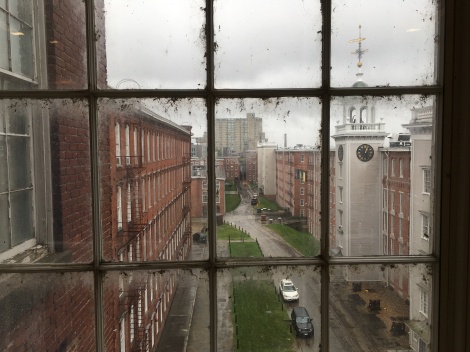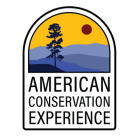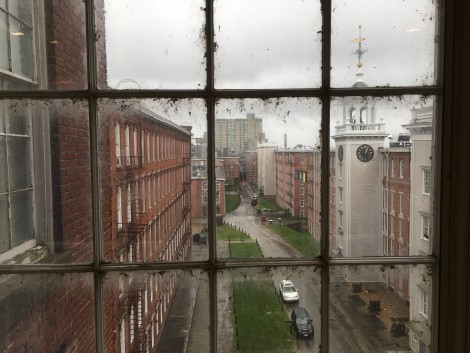RECASTING HISTORY IN A NEW LIGHT AT LOWELL

On a very rainy day earlier this week (The Scottish might have called it “dreich.” Look it up!), the Designing the Parks team drove out to Lowell, just outside of Boston, for a visit to the regional headquarters of the Archeology Program and Historic Architecture, Conservation and Engineering Center. Before ultimately deciding to pursue a master’s degree in architectural conservation, I had considered both archeology and objects conservation as alternate career paths, so needless to say, I was very excited about this visit as it seemed to combine all of my interests in one place!
Our morning began with a series of presentations by archeologists Bill Griswold and Meg Waters, historic structures conservator Rebekah Krieger, and objects conservator Joannie Bottkol. After breaking for lunch, we were given an in-depth tour of the conservation labs. The highlight was getting to hear the interns describe some of the objects they were individually working to preserve and restore and how they planned to treat them. I was in awe of their knowledge, skill, and patience to do such fine, detailed, and very scientific work!
One of the things I love most about working with cultural resources is that it is such an interdisciplinary field. You get to regularly work and collaborate with professionals from a variety of academic backgrounds and learn from their deep knowledge of highly specialized subjects. Although the Archeology Program and Historic Architecture, Conservation and Engineering Center at Lowell and the Olmsted Center in Boston each have different specialties, they all use in-depth examinations of the physical remains of the past to gain a better understanding of history. These examinations may, in turn, be used to inform how a park is managed, preserved, and interpreted for the public.
Research on newly acquired cultural resources or a follow-up investigation from a reframed point of view can sometimes recast well-known historic events, people, or places in a new light. During her presentation, Meg Watters explained how recent archeological investigations at Minute Man National Historical Park were able to locate the site of the Revolutionary War skirmish known as Parker’s Revenge that occurred just after the battles of Lexington and Concord. The discovery will help the park rework how it interprets the battle and bring greater focus to a previously overlooked event in the war’s history.
Rebekah Krieger had revelations of her own while working on a Historic Structures Report for the Thompson A.M.E. Zion Church at the Harriett Tubman National Historical Park in Auburn, NY. Through a close inspection of the church’s surviving historic fabric (including paint analysis) she discovered that the building – which some of her peers had considered a fairly plain, vernacular building – was actually designed by a noted local architect and still possessed elaborate painted details hidden underneath more recent coats of paint. These discoveries underscored the fact that the now shabby and deteriorated church had been an important community center in the 19th and 20th centuries, a place where every kind of social event occurred – from baptisms and speeches to clam bakes and the funeral of Harriet Tubman.

Rebekah Krieger presents her research on the A.M.E. Zion Church at Harriet Tubman National Historical Park.
Meanwhile, a few doors away in the conservation lab, interns working to preserve the personal possessions of Mamie Eisenhower discovered pills in an old silver case that shed light on the former First Lady’s health. Her Pepto Bismol pink plastic telephone with its bespoke silver cover was another highlight of the tour which revealed more to me about Mrs. Eisenhower’s personal taste and sense of style than almost any biography ever could. Apparently, there is some speculation that it was her love for the color pink that may have led to its association with the female sex!
All told, our tour of the NPS facilities at Lowell revealed the vast range of methods and approaches that can be used to investigate the physical remains of the past in order to enhance our understanding of history as we seek to bring it into the present. An enlightening and inspiring, indeed!
Until next time,
Clare

